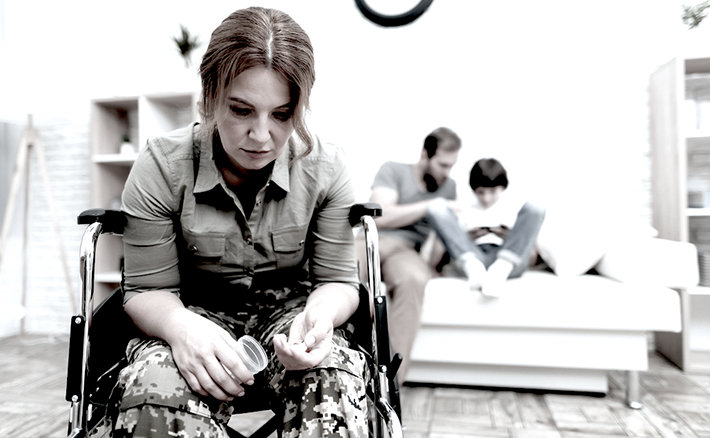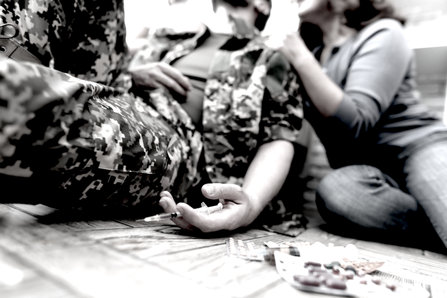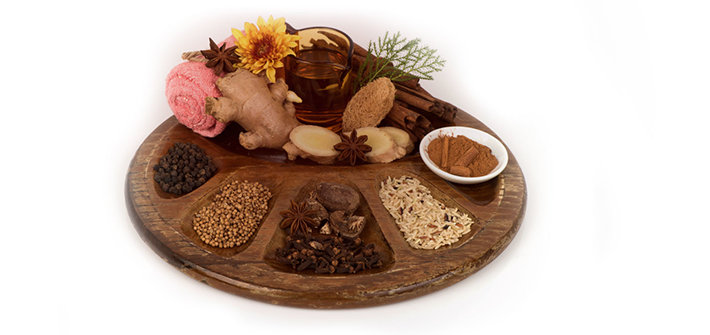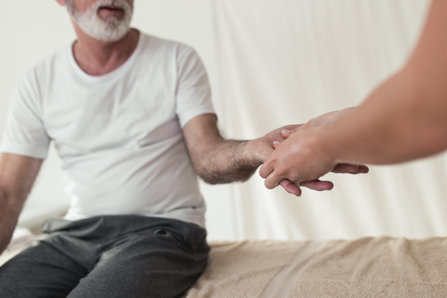Helping Our Nation’s Veterans—Finding Better Pain Relief and Reducing Opioid Addiction Among Vets

According to Practical Pain Management, no less than fifty-five percent of veterans struggle with pain.
Between 2000 and 2011, approximately 5 million veterans (nearly 55% of VHA patients) were diagnosed with one or more musculoskeletal disorders.
Clearly, many, many veterans are in pain. What are we going to do about it?
Highly Addictive Pain Relievers Are Not a Good Solution for Vets
The pharmaceutical industry (and many doctors) would simply have us put our veterans on a medley of pharmaceutical opioid pain relievers and call that good.
But that’s not a solution.
It’s not a “solution” because not only are pharmaceutical pain relievers not a solution to anything (they don’t solve pain, they merely mask the symptoms of it), but pharmaceutical pain relievers are also dangerous.
Pharmaceutical opioid painkillers are addictive, and even though they are covered by health insurance and are easy enough to get, they should not be any veteran’s first choice.
Dr. David Cosio is a pain expert at the Jesse Brown VA Medical Center in Chicago who speaks out on the maltreatment of veterans and the excessive use of pharmaceutical drugs as a “solution” to veterans’ health.
He states: “Medications and interventions are mostly used because they are covered by insurance companies, are more accessible around the country, and people perceive them to be the standard of care. The alternatives to opioid therapy are harder because they take time, commitment, and money. This is challenging for the provider and for the patient because we would all like a quick fix. But using these other options, as opposed to opioid therapy, is better for everybody.”
We could not have said it better ourselves. Our veterans are being duped into thinking that their only recourse for the extensive and prolific pain that veterans feel is to take addictive and mind-altering medications.
This is not the only recourse that they have.

We need to treat veterans with particular care. According to one study published by the U.S. National Library of Medicine, thirty percent of veterans who commit suicide were found to have been chemically dependent on alcohol or drugs prior to that.
Another factor that the study found was that substance abuse problems among veterans continue to grow—in spite of consistent efforts to curb that growth.
Veterans are not a demographic that should be consuming opioid pain relievers with wild abandon.
When people who have experienced the trauma veterans have gone through take these drugs, it creates an entirely new plethora of risk. Their minds are already highly distressed due to PTSD and the like. When we then add in mind-altering pharmaceutical drugs, it makes a veteran’s mind a whole new battlefield of its own.
Holistic Methods of Pain Relief for Veterans
The goal of helping veterans who are in pain should be to find a solution that addresses pain effectively yet does not pose a risk for addiction. Thankfully, there is a whole list of holistic and natural methods of pain relief that veterans should have access to.
More attention should be put on finding the CAUSE of the pain and treating that so the veteran is not in pain, rather than masking the pain.
These fall under two categories. They are: Remedies that reduce the symptoms of pain and remedies that address the reason for pain itself.
This area is an untapped resource, a totally new area of potential benefit and success that we can utilize in attempting to address physical pain among veterans.
Reducing Pain Symptoms with Non Habit- Forming Supplements

Remedies that reduce the symptoms of pain appear in the form of holistic supplements and vitamins and other daily routines. Some of these routes are:
- Ginger. A powerful anti-inflammatory, ginger is said to be more effective than most over-the-counter pain relievers, according to Indian Country Today. Ginger is great for muscle pain, aching joints, headaches, etc.
- Turmeric. A curry spice that tastes great on food and which can help reduce pain? Sign us up! Turmeric possesses anti-inflammatory properties and anti-cancer properties. This powerful spice naturally lowers the levels of certain enzymes in the body that cause inflammation.
- Valerian Root. Often called “Nature’s Equalizer,” valerian root does wonders for relieving insomnia, tension, irritability, anxiety, and stress. The root reduces nerve sensitivity, which alleviates pain. The root is often brewed into a tea and enjoyed that way.
- Magnesium. A deficiency of magnesium can exacerbate pain, i.e., make it worse. Magnesium is an important supplement that has pain-relieving properties and which can also reduce muscle spasms and incidences of fibromyalgia. Magnesium can be taken as a supplement, or it can be found in pumpkin seeds and sunflower seeds.
Addressing the Source of Pain Problems without Invasive Surgeries or Medications
Remedies that address the source of pain are usually more hands-on, such as daily routines or practices, care from specialists, and other efforts that veterans can take part in regularly to address the cause of their pain. Some of such options follow:

- Chiropractic care. When veterans come home from service, it’s no surprise that their bodies are often jolted out of whack from sustained injuries, bumps, bruises, impacts, etc. Their spines, joints, tendons, and ligaments can be out of place. The pain from such injuries might be alleviated by chiropractic care. And as an added bonus, chiropractic care is fully covered by VA insurance, per the Military Veterans Resource Center.
- Physical therapy. Physical therapy is another good option for veterans. Physical therapy is a great alternative to surgery and a wonderful alternative to addictive pharmaceuticals. The whole idea behind physical therapy is to use repeated movements and actions, on the body, over time, in order to get the body to heal itself. And according to the U.S Department of Veterans Affairs, physical therapy is another service covered by VA health insurance.
- Massage therapy. Sometimes, muscles and limbs just get overtaxed while one is in the military. Many veterans complain of back pain, muscle soreness, tenseness, etc. Massage therapy can be helpful for this. Massage therapy also frees up blood flow to areas of the body that might not be getting enough blood. This prompts the body to heal itself, and it reduces pain as a result.
- Closely supervised exercise program to strengthen the body and alleviate pain.
- Acupuncture and Chinese medicine.
No veteran should have to risk their very life by succumbing to the money-hungry machine that is the pharmaceutical opioid manufacturing industry. Between real-life solutions and holistic pain-relieving substances, veterans can create a wonderful quality of living that is totally without the risk and danger of addiction.
Sources:
- https://newsmaven.io/indiancountrytoday/archive/natural-pain-relief-9-alternatives-to-ibuprofen-acetaminophen-or-aspirin-wr6U0siusUyUP4MsZ8dwig/
- http://milvetsrc.org/free-chiropractic-care-available-eligible-vets/
- https://www.blogs.va.gov/VAntage/36816/physical-therapy-at-va-treatment-thats-changing-lives/
- https://www.practicalpainmanagement.com/patient/resources/understanding-pain/5-facts-you-may-not-know-about-vets-chronic-pain
Reviewed/Edited by Claire Pinelli, ICAADC, CCS, LADC, RAS, MCAP


 ®
®